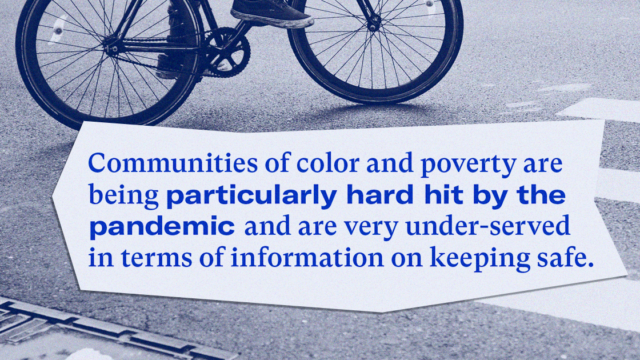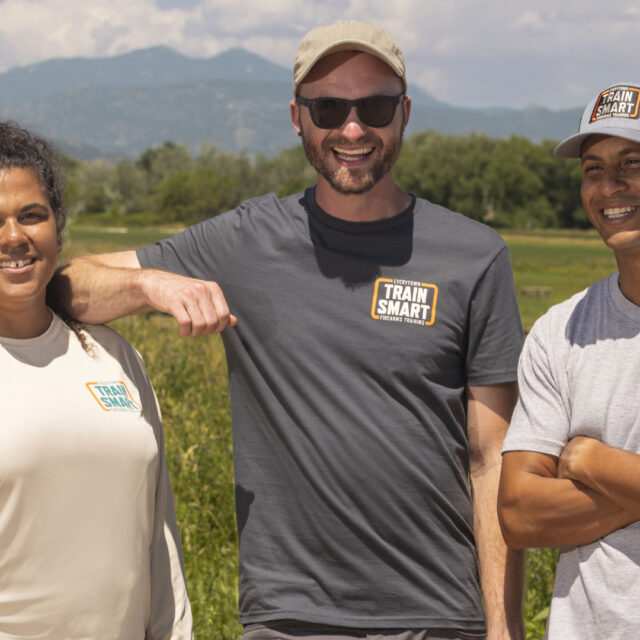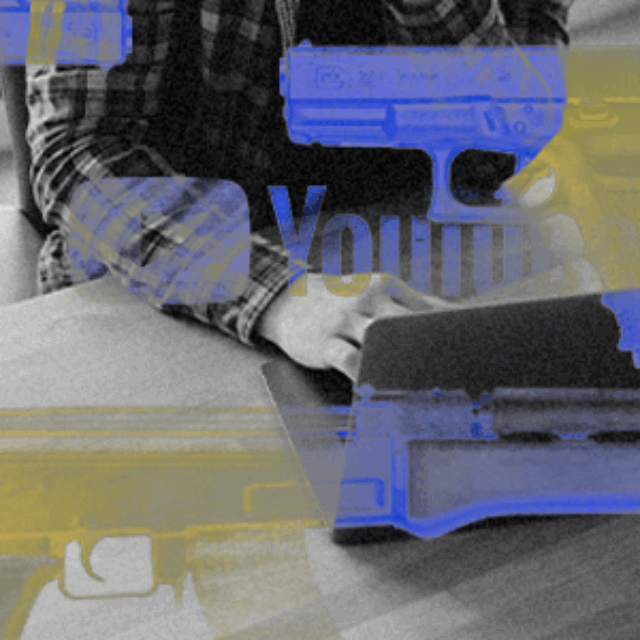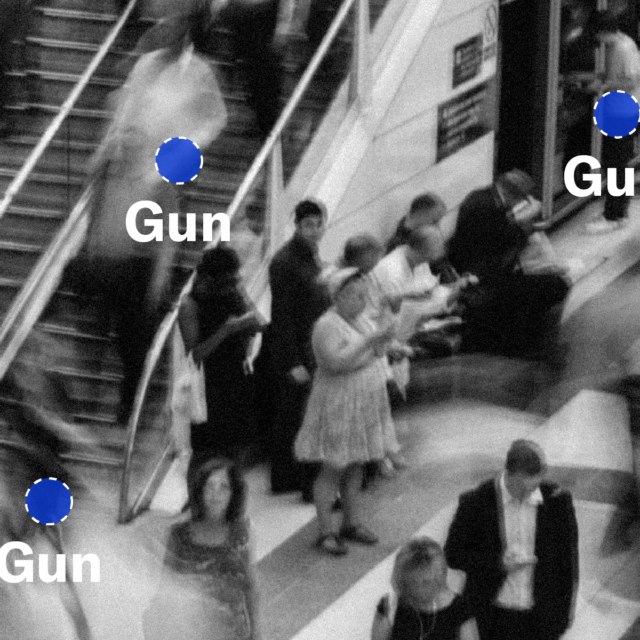How COVID-19 Has Increased the Need for Street Outreach Work

Summary
Street outreach organizations have long been at the front lines of gun violence prevention work in our cities and are now battling two pandemics at once, as they also assume the role and face the challenges of being frontline public health workers.
While many cities have reported drops in overall crime rates during the coronavirus pandemic and related stay-at-home orders, gun violence continues to persist in cities across the country. According to an analysis conducted by The Trace, between March 1 and April 19 of this year, more than 2,000 deaths attributed to gun violence took place in the United States, a 6 percent increase from 2019.1Daniel Nass, “Shootings Are a Glaring Exception to the Coronavirus Crime Drop,” The Trace, April 29, 2020, https://www.thetrace.org/2020/04/coronavirus-gun-violence-stay-at-home-orders/. Street outreach organizations have long been at the front lines of gun violence prevention work in our cities and are now battling two pandemics at once, as they also assume the role and face the challenges of being frontline public health workers.
The Essential Work of Street Outreach Programs
An evaluation of the Cure Violence anti-violence program in the South Bronx found that its street outreach efforts were associated with a 37% decline in gun injuries and a 63% decline in shooting victimizations.
Street outreach programs employ a public health approach to violence intervention,2Everytown for Gun Safety Support Fund,“The Impact of Local Violence Intervention Programs,” April 1, 2019, https://everytownresearch.org/impact-local-violence-intervention-programs/. beginning with the premise that gun violence is a contagious disease, the spread of which can be interrupted. To do so, street outreach organizations provide both immediate crisis response services and long-term stabilization support to individuals and communities affected by gun violence. Street outreach programs deploy violence interrupters—often former members of street groups, with the credibility to speak to at-risk individuals—who help prevent shootings by identifying and mediating conflicts immediately in a community and working with individuals most at risk.3Everytown for Gun Safety Support Fund, “The Impact of Local Violence Intervention Programs.” Street outreach evaluations reveal mixed impacts on gun/violence, with some sites experiencing significant improvements. A 2017 evaluation of Cure Violence in two New York City neighborhoods found that South Bronx site was associated with significant declines in gun injuries (37%) and shooting victimizations (63%), compared to a matched neighborhood. In East New York, gun injuries declined (50%) as well.4Sheyla A. Delgado et al., “The Effects of Cure Violence in the South Bronx and East New York, Brooklyn,” in Denormalizing Violence: A Series of Reports From the John Jay College Evaluation of Cure Violence Programs in New York City (New York: Research and Evaluation Center, John Jay College of Criminal Justice, City University of New York), https://johnjayrec.nyc/2017/10/02/cvinsobronxeastny/.
The communities most affected by gun violence are facing among the highest rates of coronavirus infections. As previously noted by Everytown, COVID-19 has taken a significant toll on cities, and Black and brown communities are experiencing the disproportionate impact of both the coronavirus and ongoing gun violence while lacking access to critical services that can mitigate both.5Deena Zaru, “African Americans in Chicago Face Double Scourge: Coronavirus and Gun Violence,” ABC News, April 11, 2020, https://abcnews.go.com/Health/african-americans-chicago-face-double-scourge-coronavirus-gun/story?id=70049723&cid=social_twitter_abcn.
Communities of color and poverty are being particularly hard hit by the pandemic and are very under-served in terms of information on keeping safe.
Charles Ransford, director of science and policy at Cure Violence, has also noted the “spike in both domestic violence and in shootings and killing across our cities.”6Charles Ransford, email to Michael-Sean Spence,director of policy & implementation at Everytown for Gun Safety, April 9, 2020. Street outreach workers across the country have thus taken on a new role: keeping their communities safe from COVID-19. Ransford further noted that “Cure Violence has recognized that communities of color and poverty are being particularly hard hit by the pandemic and are very under-served in terms of information on keeping safe. Seeing this gap, Cure Violence has developed a public education campaign designed to reach the hard to reach populations of at-risk young people to inform them of what they need to do to stay safe.”7Ransford, email to Spence.
Street Outreach Groups are Battling Dual Pandemics
Communities Partnering 4 Peace is a consortium of gun violence prevention groups in the Chicago area, convened by our local grantee Metropolitan Family Services.
Street outreach workers are relying on the skills they have honed as violence interrupters as they focus on coronavirus mitigation in addition to gun violence prevention,8David Muhammad and Devone Boggan, “The Very Essential Work of Street-Level Violence Prevention,” The Trace, April 14, 2020, https://www.thetrace.org/2020/04/the-very-essential-work-of-street-level-violence-prevention/. often with limited resources.9Marisa Fernandez, “US Still Has a Gun Violence Problem despite Coronavirus Lockdowns,” Axios, May 7, 2020, https://www.axios.com/coronavirus-gun-violence-shootings-crime-rate-11e273ce-e474-4c29-b92a-391446bbb91d.html?utm_source=newsletter&utm_medium=email&utm_campaign=newsletter_axioscities&stream=cities. In Chicago, where shootings are still occurring at a concerning rate, Communities Partnering 4 Peace remains on the front lines, with its outreach workers now speaking to at-risk communities about both gun violence and COVID-19.10Samantha Michaels, “Former Gang Members Wanted to Stop Gun Violence in Chicago. Now They’re Fighting the Spread of a Deadly Virus,” Mother Jones, April 22, 2020, https://www.motherjones.com/crime-justice/2020/04/former-gang-members-wanted-to-stop-gun-violence-in-chicago-now-theyre-fighting-the-spread-of-a-deadly-virus/. In many cities, street outreach workers are distributing personal protective equipment, food, and essential supplies to high-risk neighborhoods.11Eileen Grench, “Harlem Anti-Violence Group Takes Covid Warning to the Streets,” The City, April 14, 2020, https://thecity.nyc/2020/04/harlem-anti-violence-group-takes-covid-warnings-to-streets.html?fbclid=IwAR3JSBjT9Zr6sCfPUTjmycNN7JxCNbSjzsrLdTXkDnPYpm5KFXhw4Qgi7M0. 12Muhammad and Boggan, “Very Essential Work.” Since March 23, Advance Peace, an organization working on the front lines to reduce gun violence, has delivered 6,000 boxes of food, masks, hand sanitizer, and other supplies to impacted communities in Sacramento. The organization has also supplied at-risk youth with cell phones and Chromebooks to ensure that they stay connected to school and their life coaches.13“‘It Was a No-brainer’ | Leaders of Sacramento Anti-gun Violence Program Buy Groceries for Families They Mentor,” ABC10.com (Sacramento, CA), April 15, 2020, https://www.newsbreak.com/california/sacramento/news/0Olknyc1/it-was-a-no-brainer-leaders-of-sacramento-anti-gun-violence-program-buy-groceries-for-families-they-mentor. Ryane Nickens, executive director of the Washington, DC-based TraRon Center, which combines art therapy, peer counseling, and one-on-one counseling to help survivors of gun violence, shared that the center, with the help of its partners and donors, has placed laptops in 98 percent of its students’ homes.14Ryane B. Nickens, email to Michael-Sean Spence, director of policy & implementation at Everytown for Gun Safety, April 13, 2020. Nickens further noted that the TraRon Center was providing children with lunch in the initial weeks of school closures, but as the Centers for Disease Control and the mayor of Washington, DC, issued further guidance on large gatherings, the center suspended in-person activities and instead began giving families weekly gift cards.15Nickens, email to Spence.
Many programs are staying in touch with their communities virtually.16Jonathan Bullington, “‘This Virus Is Just as Deadly’: Louisville’s Gun Violence Interventionists Fight COVID-19,” Louisville Courier Journal, April 19, 2020, https://www.courier-journal.com/story/news/local/2020/04/19/coronavirus-pandemic-challenges-gun-violence-prevention-louisville/5155001002/. In Nashville, outreach workers with Gideon’s Army are finding themselves increasingly defusing conflicts over the phone and online.17Lee Paterson, “Violence Interruption Goes Remote Thanks to Coronavirus Restrictions,” Kera News, May 11, 2020, https://www.keranews.org/post/violence-interruption-goes-remote-thanks-coronavirus-restrictions. Outreach workers have also found that social distancing has impacted interpersonal conflicts, causing them to occur more frequently and escalate more quickly via online communication.18Champe Barton et al., “When the Shootings Don’t Stop,” The Trace, May 6, 2020, https://www.thetrace.org/2020/05/coronavirus-gun-violence-interruption-street-outreach/
Unfortunately, street outreach programs have already experienced cuts in funding and a reduction in available support services for at-risk individuals as job opportunities disappear and unemployment soars nationwide.19Barton et al., “When the Shootings Don’t Stop.” As cities continue to grapple with the economic implications of COVID-19, funding for street outreach programs may be further affected, which in turn will severely impair their ability to support their communities during these dual pandemics.
What Lawmakers Can Do Right Now
- Designate street outreach workers as essential workers or exempt from stay-at-home orders so they can continue their life saving work during the coronavirus pandemic.
- Provide street outreach workers with personal protective equipment and hazard pay, where applicable, as they work on the front lines of the gun violence and coronavirus pandemics.
- Ensure sustained and flexible funding for street outreach and other gun violence intervention programs. Federal Victims of Crime Act (VOCA) victim assistance grants can be utilized to support these programs.
- Continue to support street outreach programs by ensuring that cities and relevant agencies track and share demographic data regarding gun violence and COVID-19.
Everytown Research & Policy is a program of Everytown for Gun Safety Support Fund, an independent, non-partisan organization dedicated to understanding and reducing gun violence. Everytown Research & Policy works to do so by conducting methodologically rigorous research, supporting evidence-based policies, and communicating this knowledge to the American public.




